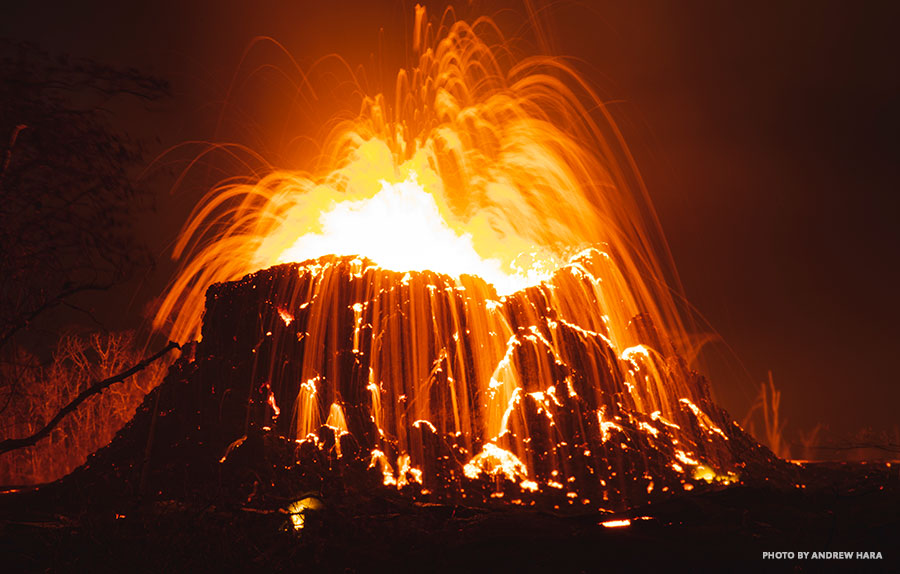Story by Judy Edwards | Photographs by Andrew Hara
When she’s not writing lyrical prose for us, Judy Edwards works for a nonprofit that supports national parks. We asked her to share what it’s like to live next to a volcano.
In my imagination, I can clearly see the lānai of my friend Tim’s house, its two chairs facing the liliko‘i vines and the young avocado tree. I can feel the crunch of the driveway’s sharp and glossy cinders, which would inevitable get kicked into the house, stuck to the bottoms of my slippers. During the summer of 2011, Tim was kind enough to rent this house to me (newly moved from Maui) until I could find something more long-term in Hilo. That house, with its tropical living-room mural and big water catchment tank out back, exists only in my memories. Last May, its very molecules were obliterated under a lava lake that is now many times the height of the former roofline. The house used to stand on Ho‘okupu Street in the Leilani subdivision. One day, the yard next door sprouted what would be labeled, in this eruptive phase of Kīlauea Volcano, “Fissure 21.” Then a huge crack appeared, running diagonally under the house. As the daily video footage came in from U.S. Geological Survey helicopters, we watched the roof, with its prized solar panels, wash away on a tide of red and black. It is impossible to comprehend where the street once ran. Things have changed fundamentally. As in, to the fundament. The very ground.

While it is technically true that the current, powerful eruption is “happening directly” only to a relatively small segment of Hawai‘i Island’s vast Puna District, that assessment belies the massive devastation Kīlauea is meting out. Yes, only a small amount of land is covered by lava, or probably will be, but braiding and unbraiding flows have dissected what was once a functionally homogeneous community that now finds itself painted into some complex and perplexing corners. There are farms and homesteads spared by the lava, yet surrounded by it—helicopters have airlifted stranded cattle out in nets over raging lava rivers. The farms can’t be worked, the homes can’t be inhabited; they exist in a kind of lava limbo. Others are even less lucky. By mid-June, some 700 homes had been lost to the lava, possibly thousands of residents made houseless. How do we assess the stability of a community that is, in part, living in tents in a parking lot in Pahoa?





